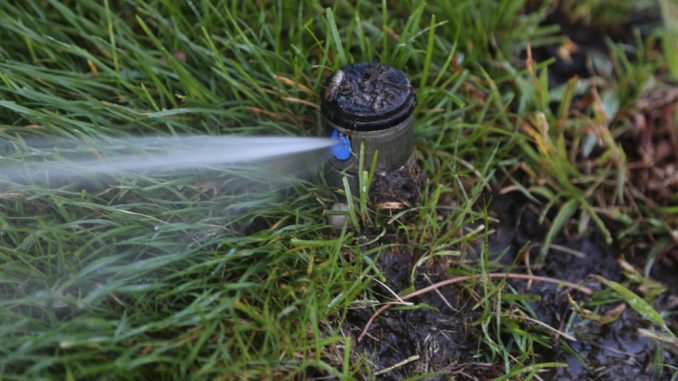
Public officials are still urging locals to cut back on water usage, as the North Fork faces a severe drought and Stage 1 water emergency.
The Suffolk County Water Authority has asked residents in Southold, Shelter Island, Southampton and East Hampton towns to stop all irrigation between midnight and 7 a.m., reduce shower times and refrain from non-essential water use. Joe Pokorny, deputy CEO for operations at SCWA, said there is some evidence that some people have been shifting irrigation to early evening, but noted that “the change has been very muted and we are still experiencing the near record peaks in the early morning hours.”
“Suffolk County Water Authority has been ringing the alarm bell … They put out a series of recommendations and a lot of those recommendations aren’t necessarily being honored,” Supervisor Scott Russell said at a work session last Tuesday, adding that the town will work to spread the message. “I think that maybe there’s a certain ambivalence or a certain lack of understanding or lack of interest in reading what’s going out there. So I think maybe what some people are doing, it’s unintentional, just not paying attention.”
SCWA has no policing power and does not levy fines or penalties, so conservation is voluntary for the approximately 10,000 customers in Southold. Mr. Pokorny said the problem is that everyone is using their water at the same time.
“We have a finite number of wells and pumps that can draw water from the ground, treat it and then distribute it to our customers,” he said. “If the demand for water exceeds the capacity of our infrastructure, then pressures sag, tank levels decrease and there is the potential for a shortage of water if it is needed during an emergency such as a fire.”
Irrigating landscapes in the early evening is a good alternative to early morning, he added, noting that people shouldn’t water their lawns every day either. “One or two good soakings a week is the best strategy,” he said.
“We are seeing record demand for water all over the island. The difference in the main body of the island is that there are more wells and the infrastructure is better developed so that it can supply more water during the peak,” Mr. Pokorny explained. “On the East End, wells are smaller and there are less of them. Couple that with the big increase in summer population and excessive water use and you have the right combination for what we are seeing now. We continue to add to our infrastructure on the East End but we still need help from the public when the weather is this hot and dry for so long.”
Peconic Landing leads the top water users in Southold Town, consuming a little more than 17 million gallons split between two accounts between June 1, 2021, and Aug. 1, 2022. The 144-acre campus encompasses nearly 400 accommodations, including homes and health center capacity. Peconic Landing is Southold Town’s second-largest employer, and many of its departments operate 24/7.
“Peconic Landing has always been committed to using our environmental resources responsibly, and that includes our water usage,” its president and CEO, Bob Syron, said in a statement. “Minimizing the use of resources is always on our mind from an economic standpoint and, more importantly, as one of the many ways we can help conserve and protect the beautiful environment we call home.”
Peconic Landing ceased irrigation when SCWA declared a water emergency and increased member communications to encourage the reduction of non-essential water use, according to a spokesperson. Mr. Syron added that the community is working closely with the water authority to limit impact.
An increase in water usage from 2016, when Peconic Landing reported a combined water usage of 12.7 million gallons, can be attributed to expansions that included new apartments and employees, a spokesperson said.
The community was recognized in 2016 by the U.S. Green Building Council for its commitment to environmental design, in part for its efforts to conserve resources. Low-flow faucets and shower heads have helped reduce water usage as have Energy Star washing machines and dishwashers, drought-resistant flowers and shrubs and water-sensing sprinkler systems to minimize irrigation.
San Simeon by the Sound, another large community-based facility, follows Peconic Landing as Southold’s second largest water user, with around 3.8 million gallons used over the last 13 months.
Other top 10 users include similarly large residential facilities and water-reliant businesses, such Vineyard View, Cliffside Resort and Mattituck Main Road Laundry. A few individuals are also listed among the top water users in town.

